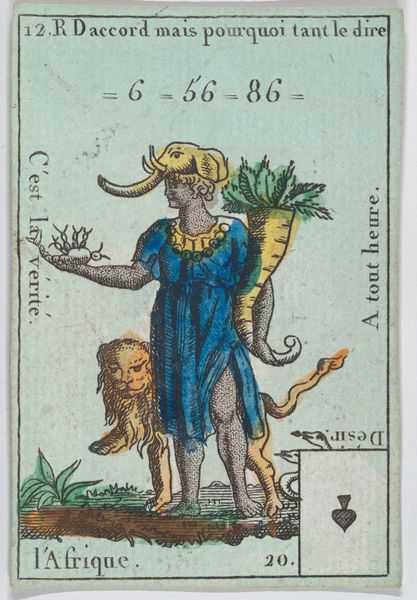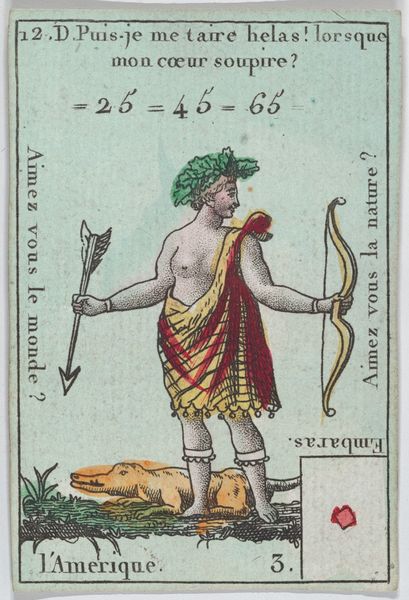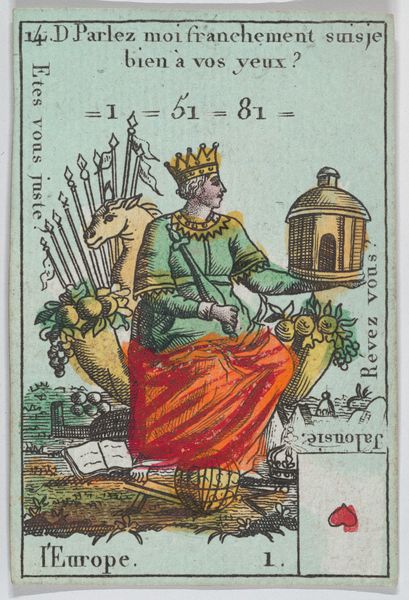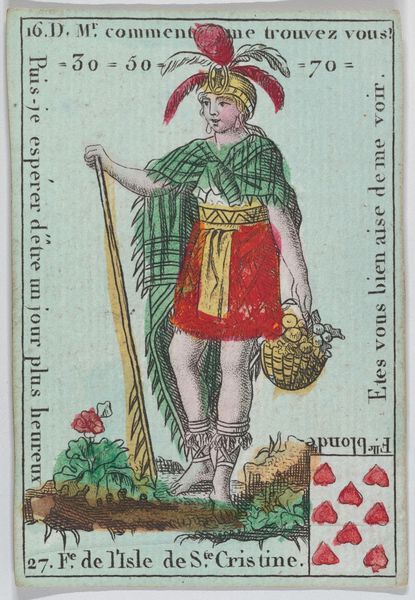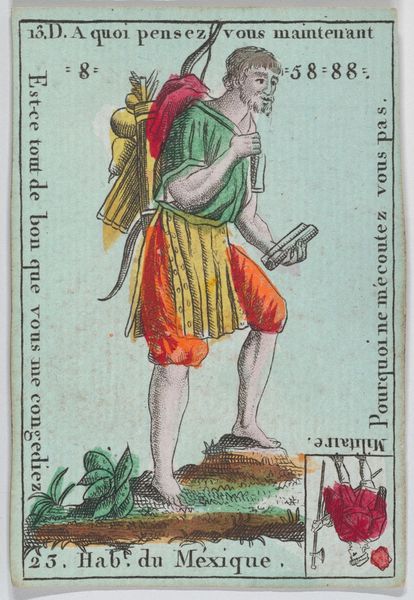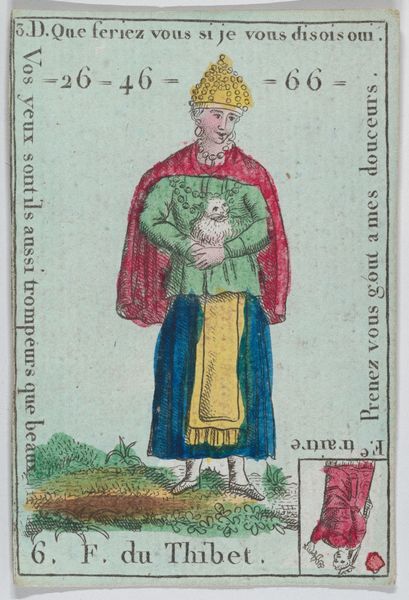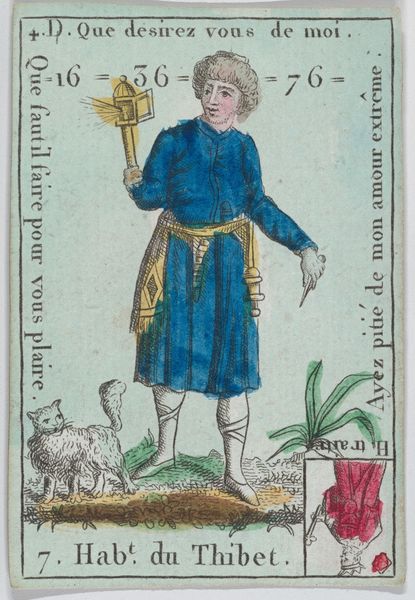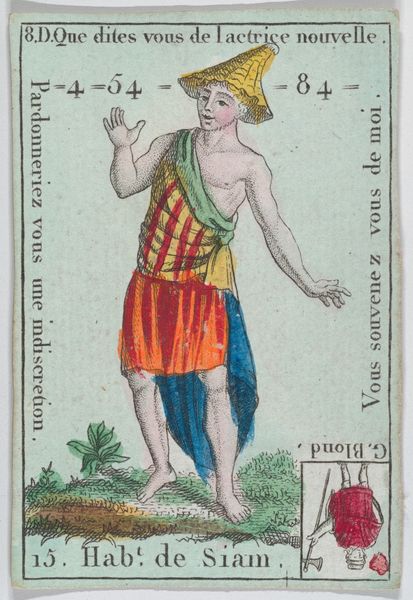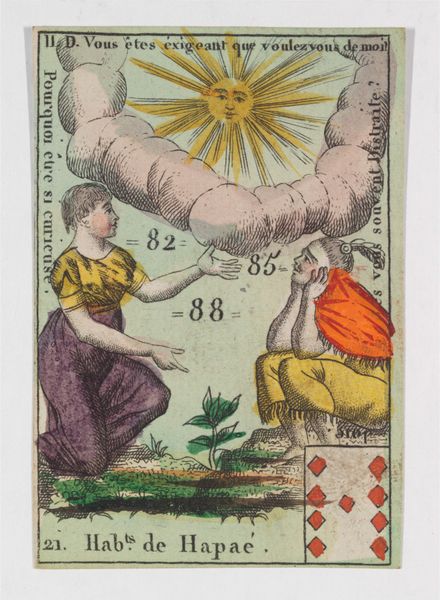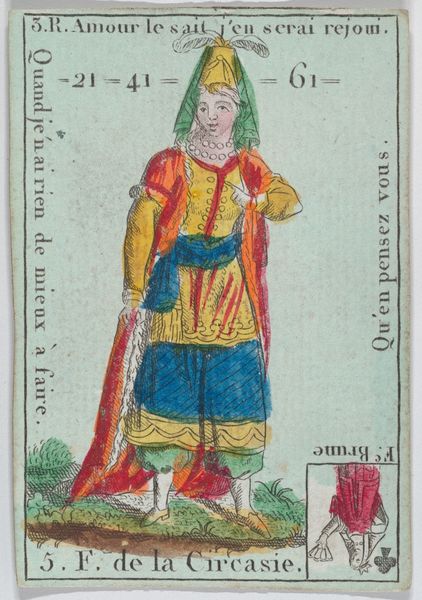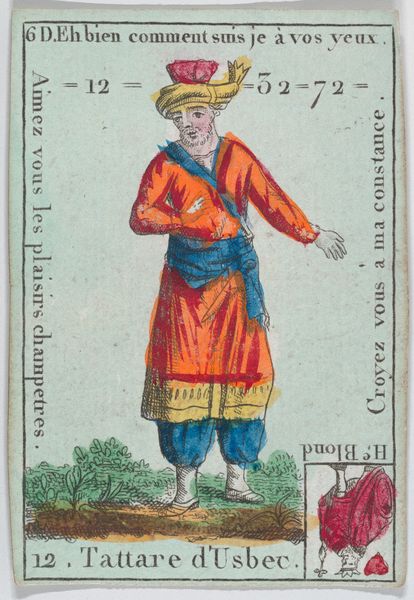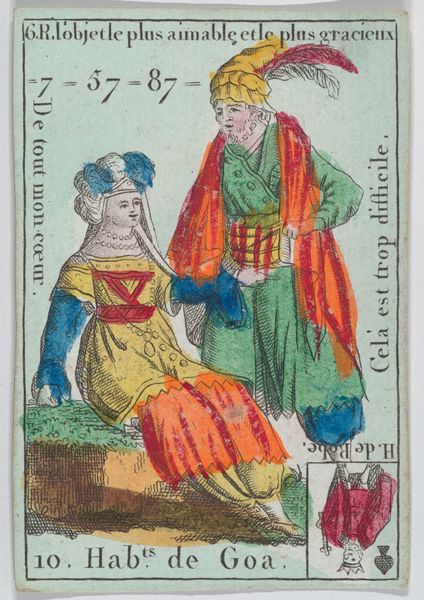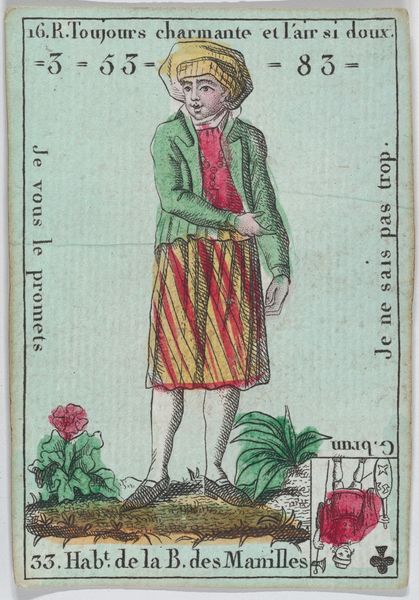
drawing, print, engraving
#
drawing
#
allegory
# print
#
figuration
#
orientalism
#
history-painting
#
engraving
Dimensions: 3 3/16 × 2 1/16 in. (8.1 × 5.3 cm)
Copyright: Public Domain
Editor: This is "L'Asie" from a series of playing cards called "Jeu d'Or," dating back to the 18th century. It's an engraving. I’m struck by how it uses allegory to depict Asia. It feels like a mix of genuine cultural elements and... well, maybe a bit of a fantasy? How do you interpret this work, especially with its depiction of Asia? Curator: The card clearly draws upon the visual language of its time, a blend of symbolism and nascent anthropology. Consider the camel: it isn't just an animal, it's shorthand for the exotic East, for trade routes, and for perceived 'otherness.' How do you feel this image reflects the period’s understanding – or misunderstanding – of Asian culture? Editor: I guess it's trying to encapsulate an entire continent into a single image, relying on stereotypes that would have been recognizable at the time. The woman with the olive branch looks a little like a Roman goddess. What does that combination signify? Curator: The Roman-esque figure offers a clue; the West 'civilizing' the East. It speaks of power dynamics. Do you see how the artist uses specific symbolic tropes – like the incense – to reinforce a Eurocentric worldview? This imagery often played into colonial narratives of dominance and cultural superiority. Editor: So, it’s less a portrait of Asia and more a reflection of Europe's perception of it? I didn't initially see it that way, but it makes sense now. Curator: Precisely. The 'Jeu d'Or' series isn't merely about geography; it’s about power, knowledge, and how cultures see each other. Recognizing that tension transforms the way we view these historical objects. Editor: I'll never look at playing cards the same way again. Curator: These cards hold echoes of centuries past, a lens into how different eras framed their world. They teach us about history and ourselves.
Comments
No comments
Be the first to comment and join the conversation on the ultimate creative platform.
